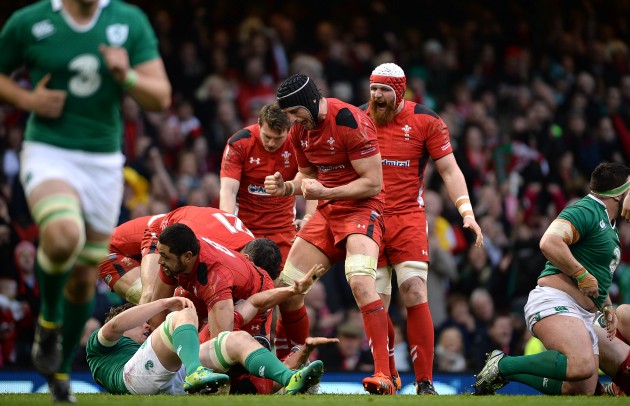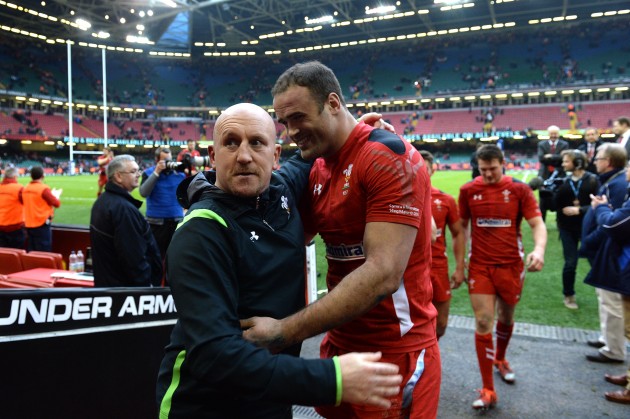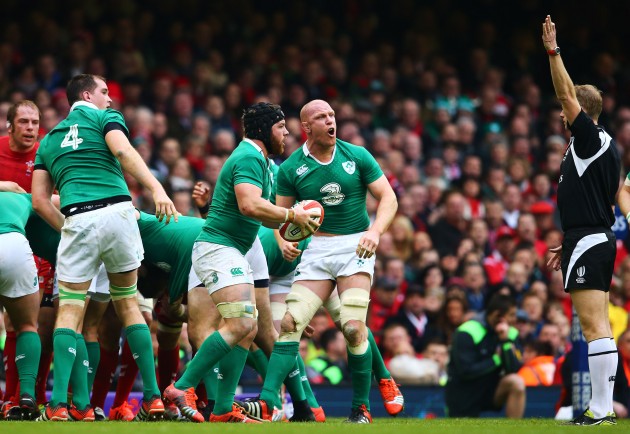Wales unravel the third-best team in the World
Wales’ 23 – 16 victory over Ireland will rightly draw rapturous applause. Against any Irish team, in the modern era, this would have been a fine performance. Dominating the breakdown, deciphering one of the best lineout systems in the world, kicking and chasing with nano accuracy and making an extraordinary 250 tackles would be noteworthy against any Irish team of the last 20 years. But this isn’t any old Irish team.
This is Joe Schmidt’s team, one that prior to kick off occupied a World Rugby ranking usually reserved for Australia or South Africa. Wales’ team performance was so complete that it seems trivial to even mention individuals – but mention them we must. Alun Wyn Jones and Luke Charteris delivered one of the finest performances ever witnessed from a Welsh lock partnership.
Dan Biggar’s execution, with and without the ball, was hugely impressive and anyone who continues to question his role at ten clearly has an agenda. Sam Warburton had a career defining performance on the ground and in the air – his work at the lineout was exemplary. Jamie Roberts carried and tackled like a man whose lack of concern for his own wellbeing is gloriously careless when you consider the knowledge that he has of the human body. Leigh Halfpenny was Leigh Halfpenny – a player so stunningly dependable that you’d bet your last penny, mortgage, the national debt of the UK and the IMF’s cash assets on him executing any task he is presented with. It was a great result for Wales and rugby as a whole. That was a proper test match.
The finest defensive display in professional Welsh rugby
I can’t recall a finer Welsh defensive display. It’s a struggle to think of a greater defensive display from any test team in the last decade. A tackle count of 250 with a completion of 92% is almost unthinkable. Wales worked at a level that, in any normal job, would warrant a visit from the European Court of Human rights.
Nine players completed more than 14 tackles and five Welsh players completed more than 20 tackles. Charteris completed 31 tackles on his own – that’s three games worth of tackles for a tier-one lock. During the second half Wales defended 45 phases over seven minutes in a manner that has been compared to Rorke’s Drift. But it was bigger than that. Driving back Ireland’s heavy carriers and well organised ‘pick and go’ game for 45 phases was more akin to the Ewoks beating the Empire in Return of the Jedi. Shaun Edwards doesn’t smile often but I’ll guarantee that even he will be beaming this week.
YouTube moments everywhere
It’s very rare that you see a complete team performance in elite rugby where every player exceeds their already Test-standard performance indicators. But Wales did. Be it with or without the ball virtually every player had a moment that was worthy of a Vine or YouTube post.
Jonathan Davies demolishing Jonathan Sexton when Davies’ hand momentarily turned into a medieval lance. Warburton’s tremendous lineout steal five metres out from the Welsh line. Scott Williams’s gorgeous outside drift that led to his try in the 61st minute. Biggar’s Dan Carter-like composure in nailing a drop-goal when Wales were down to 14 men. Charteris, Alun Wyn Jones and Dan Lydiate creating a defensive net that was tight enough to catch sardines. Liam Williams’ almost Michael Jordan-like ability to hang in the air under high balls – rumours in Llanelli suggests that Nike are soon to launch Air Sanjay. And of course Halfpenny, who’s 86% goal kicking completion was sublime and the foundation of the victory.
But the final ‘hat tip’ has to be reserved for Samson Lee’s crutches; any structure which can support that beast deserves praise indeed.
The unseen work
There were many obvious examples of Wales’ positives on Saturday. Moments that can be spotted and rewound on TV. But many of Wales’ most effective pieces of work may have gone largely unseen. The reading of the Irish lineout was first class. Not only did Wales lose just one of their lineouts but they reduced Ireland’s to a completion of 66.7%. Warburton’s steal five metres out showed that Wales had clearly done their homework on Ireland’s lifting sequence and footwork, as jumping defensively on a five metre lineout is hugely risky.
The lack of reliable lineout possession removed a vital piece of Ireland’s game-plan and forced Jonathan Sexton into an uncharacteristically nervous display. Welsh carriers deliberately hit contact low, with closed shoulders, and nullified Ireland’s penchant for exploiting high body positions. Wales also made a deliberate effort to move the ball out to wider carriers and frequently passed the ball beyond their favoured 12 channel in an effort to keep the Irish backrow six to ten yards away from the first contact. Much was made of Schmidt’s tactical prowess prior to kick off, but Warren Gatland won that battle.
Wayne Barnes deserves praise
Half of the people reading this will agree with the statement above and half will despise it. That’s the uncomfortable reality of being a referee or commentating on the performance of a referee. But whilst Wayne Barnes obviously didn’t get every decision correct, no ref can, he whistled the game in a way that largely allowed quick ruck ball for both sides.
Test rugby has received a lot of negative press recently, due to the efficiency of modern defences stifling the game. However, the one thing that can nullify elite defence is quick ruck ball and Barnes was red hot on that front. Any player slowly rolling away or clinging to a tackle was pinged. Soccer has a problem with player’s innocently throwing their arms in the air to suggest that they haven’t infringed, rugby has a problem with players doing the same when their body is casually draped over a ruck like a duvet. Barnes’ obviously didn’t get every call correct, but he got enough right to allow rugby to be played as it should.







